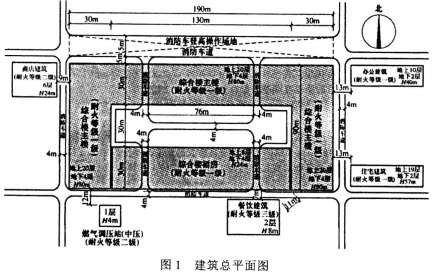问题
问答题 案例分析题
某市一栋综合楼,地下共4层,地上共20层,采用框架剪力墙结构,总建筑面积30万m2,主楼与其裙房之间设有防火墙等防火分隔设施,主楼各层建筑面积均大于1000m2。该综合楼总平面布局及周边民用建筑等相关信息如图1所示。该综合楼地下3、4层均为人防层,其主要使用功能均为普通汽车库、复式汽车库和储存可燃固体的库房;地下2层主要使用功能为展览厅、管理用房及燃气锅炉房、柴油发电机房、变压器室、配电室、消防泵房等设备用房;地下1层主要使用功能为消防控制室、管理用房及商场营业厅。主楼首层主要使用功能为门厅、咖啡厅、自助餐厅、商场营业厅,地上2、3层主要使用功能为儿童游乐厅、展览厅、商场营业厅,地上4~19层主要使用功能为办公室,地上20层主要使用功能为会议厅、多功能厅。裙房1~6层主要使用功能为商场营业厅。该建筑按有关国家工程建设消防技术标准配置了室内外消火栓给水系统、自动喷水灭火系统和火灾自动报警系统等消防设施及器材。

根据以上场景,回答下列问题。
消防水泵的启动方式分为哪几种?
答案
参考答案:
消防水泵的启动方式分为:自动启动和手动启动。
